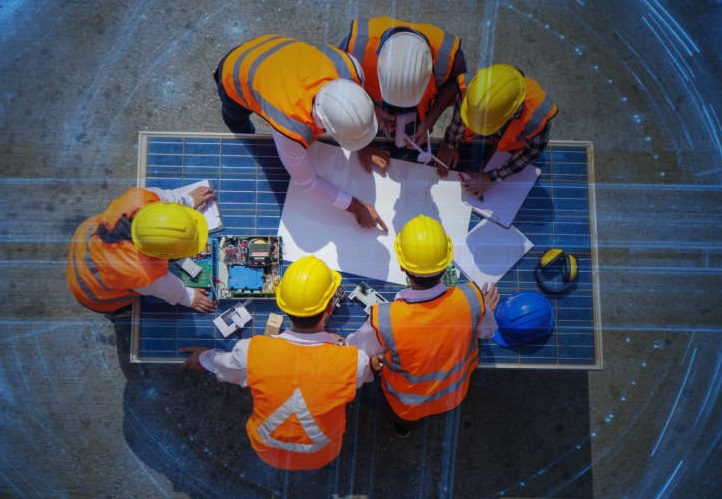Communication is paramount in construction. We are all sending emails, making phone calls, and transmitting information back and forth through project management software. These methods of communication are good, but are they great for construction? We think the answer is NO.
Construction is built in the field. It’s built on the back of the men and women that run the equipment, turn the wrenches, carry the load, and put in the work. All forms of construction rely on the field workers and office workers being on the same page. This also goes for the communication between the general contractors and the project manager/superintendents and the subcontractors. The non-technological forms of communication can include:
- In person meetings: Hold the meeting sin person versus the teams, webex, zoom platforms.
- In person conversations. Meeting in the field or at an office for a regular conversation to discuss the work being performed.
- Regularly scheduled onsite in-person meetings with project managers and superintendents, no teams access
Non-technological forms of communication offer several benefits to the construction industry that technological forms may not fully replicate. These benefits stem from the nature of face-to-face interactions and the specific demands of construction projects. Here are some key advantages:
1. Enhanced Clarity and Understanding
- Immediate Feedback: In-person meetings allow for real-time clarification and immediate feedback, reducing misunderstandings that can occur through email or phone calls.
- Non-Verbal Cues: Body language, facial expressions, and tone of voice provide additional context that can help convey meaning more clearly than written or verbal communication alone.
2. Stronger Relationships and Team Cohesion
- Trust Building: Face-to-face interactions foster stronger personal connections and trust among team members, which is crucial for collaboration and resolving conflicts.
- Team Morale: Regular in-person conversations contribute to team morale and a sense of community, which can enhance productivity and job satisfaction.
3. Effective Problem Solving and Decision Making
- Collaborative Environment: In-person meetings encourage spontaneous brainstorming and collaborative problem-solving, leading to more creative and effective solutions.
- Complex Discussions: Complex issues, which are common in construction projects, can be more effectively addressed in person where multiple perspectives can be discussed and integrated quickly.
4. Improved Coordination and Efficiency
- Site-Specific Insights: On-site meetings allow for a direct assessment of construction progress and issues, providing valuable insights that can’t be fully captured through digital means.
- Immediate Action: Decisions can be made and implemented more quickly during in-person discussions, reducing delays associated with back-and-forth communication via email or software.
5. Reduced Miscommunication and Errors
- Holistic View: Face-to-face communication provides a more holistic understanding of discussions, minimizing the risk of miscommunication that can lead to costly errors or rework.
- Direct Interaction: Direct interaction with subcontractors, suppliers, and other stakeholders ensures that everyone is on the same page, reducing the likelihood of misinterpretations.
6. Better Engagement and Participation
- Active Participation: In-person meetings often lead to higher levels of engagement and participation, as attendees are more likely to contribute actively when physically present.
- Focus and Attention: Attendees are generally more focused and less likely to be distracted compared to virtual meetings where multitasking can be a problem.
7. Cultural and Organizational Benefits
- Organizational Culture: Regular face-to-face interactions help reinforce the organizational culture and shared values, which can be critical in maintaining a cohesive work environment.
- Conflict Resolution: Personal meetings are more effective for addressing and resolving conflicts, as they allow for a more nuanced and empathetic approach.





